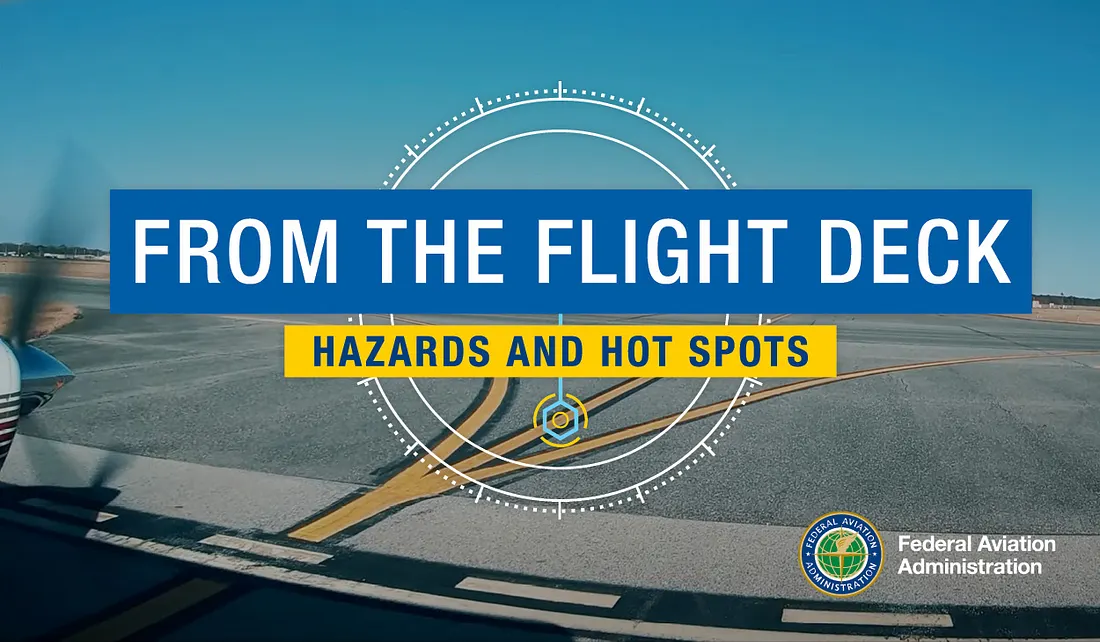‘From the Flight Deck’ Preps Pilots, Offers Preflight Planning Aid

Some say there’s no better way to learn than by doing, and a great way to complement that is to learn by viewing — especially from the first-person view if you’re a pilot.
That’s what the FAA’s From the Flight Deck video series offers general aviation pilots flying to and from airports around the country. Pilots and flight instructors are tapping into this resource to fly safely and educate trainees, evidenced by the 1 million-plus views to the series on YouTube.
“Pilots are visual learners, and this reaches the core of how they learn,” said Cary Grant, an FAA Safety Team representative and aeronautical science professor at Embry-Riddle Aeronautical University Prescott Campus in Arizona. “I’m a big user of the From the Flight Deck videos for myself and for my students in lessons. To teach them without the picture, it doesn’t really become a learning experience like this.”
What the video series offers
From the Flight Deck provides pilots with actual runway approach and airport taxiway footage captured with aircraft-mounted cameras. The videos also incorporate diagrams and graphics to identify hot spots and point out other hazards like potentially confusing intersections, the location of hold short lines, or unique attributes of the runway safety area that pilots need to watch out for at airports.
The series features other topic-specific videos that help pilots avoid landing on or taking off from the wrong surface or at the wrong airport and explain how to properly follow air traffic control instructions to hold short or line up and wait.
See the From the Flight Deck map of airports with videos and other pilot resources.
How the FAA chooses airports and captures footage
The FAA prioritizes airports that see the most pilot errors and runway safety events relative to their total number of flights.
An FAA pilot flies to these airports with cameras attached to his Cessna 210 Centurion. His camera setup delivers footage that shows what the flight looks like from his view at the controls of the plane.
Why the FAA launched the series
The idea was to showcase specific airports in hopes that a more detailed first-person view would improve awareness and thus safety.
The first episode aired it in early 2020. It raised awareness of unique characteristics of Hudson Valley Regional Airport in New York, where the FAA was seeing a steady increase in runway incursions.
The Hudson Valley video points pilots to a particular hold-short line, a grass runway and a slanted taxiway at the airport.
The series took off from there. The FAA published nine more location-specific videos shortly after the premiere and has grown the playlist to 140 episodes.
Continuing education
The series is helping pilots of all ages fly safer.
Jaden Gitlow, a 21-year-old, third-generation pilot and student at Worcester Polytechnic Institute, said he referenced the videos dozens of times when training for his private pilot license and still does. The Phraseology video is Gitlow’s “go-to” resource for flying around Massachusetts, and airport-specific videos have helped him fly safely from takeoff to touchdown in long flights, including a recent father-son trip to Lakefront Airport near New Orleans.
“That is a surprisingly complex little airport to taxi around, and reviewing the video beforehand really increased my situational awareness and helped us not fall victim to a hot spot there,” he said.
“The Winter Weather Challenges video is a great one to show my students up here,” said Mary Build, chief flight instructor at Eastern Slope Aviation Academy in Fryeburg, Maine. “As an instructor and pilot, these videos are wonderful assets.”
Other safety resources
The FAA publishes other safety resources that can be useful preflight planning tools, helping pilots better understand and prep for unique airport challenges they may encounter. Pilot handbooks, arrival alert notices and a data visualization on the From the Flight Deck webpage makes it easy for pilots to find these airport-specific safety products.
The handbooks, for example, include information and tips from the air traffic professionals who know their airport layout thoroughly. They also include photos and graphics to call out specific safety challenges. Arrival Alert Notices also use photos to give a firsthand view of the approach to an airport while flagging potential wrong surface issues. “Even if you’re familiar with the airport,” Grant said, “if you reference the video and handbook, you’ll learn things you didn’t know.”
